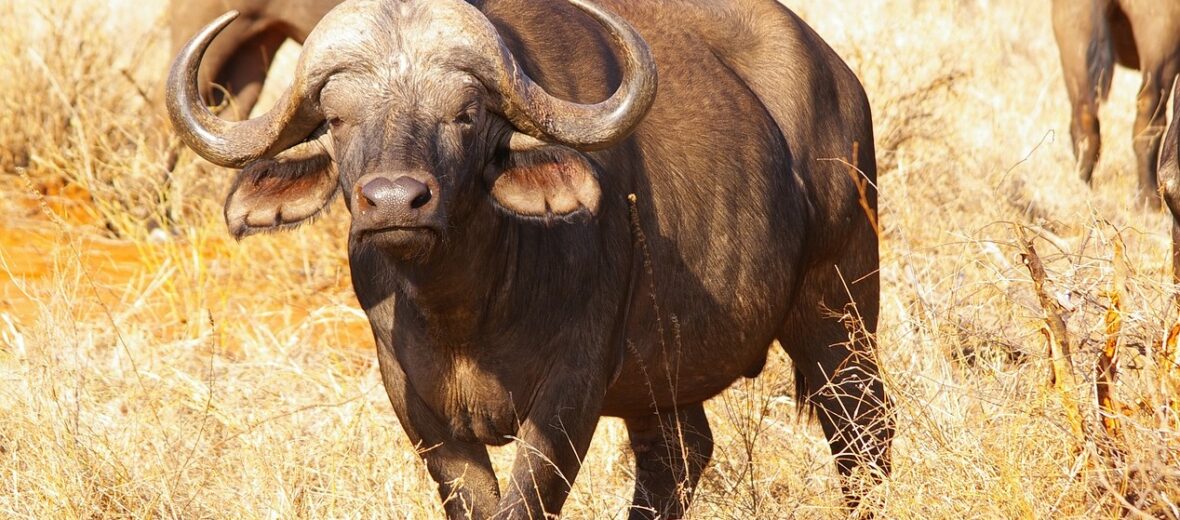
Being the most bounteous of Africa’s large herbivores it’s the African buffalo. They inhabit a large range of habitats, including grasslands, semi-arid bushland, coastal savannas, and lowland rainforests. Even though there are approximately 401,000+/- left in the wild, they are listed as Near Threatened by the IUCN. They suffer from habitat loss and climate change.
First the Stats…
Scientific name: Syncerus caffer
Weight: Up to 2,000 lbs.
Length: Up to 11 ft.
Height: Up to 5 ft.
Lifespan: Up to 22 years
Now on to the Facts!
1.) The African buffalo is estimated to be 4 times stronger that the Ox.
2.) Both males and females have horns. The male’s horns are larger than the female’s.
3.) Being a herbivore (eats plant matter), the bulk of their diet consists of grasses. They also consume leaves and other plants.
4.) Herds are typically around 10 – 15 animals. They can reach into the 1,000s during mass migrations in search of water and food sources.
5.) Herds usually consist of primarily females and young. Males number only 1 – 3.
But wait, there’s more on the African buffalo!
6.) When faced with predators, animals of the herd form a circle around the young, old or weak animals, exposing their large and sharp horns toward the predators. This barrier is very effective and prevents predators from reaching the animals that are not strong enough to fight.
7.) There are 5 recognized species of African buffalo.
Did you know…?
African buffaloes have fantastic memories and can remember previous assailants and will attack them on site.
8.) The calves are dependent upon their mother for up to a year.
9.) They are well known for their superb memory. They have even been documented killing the cubs of a lion who previously attacked the herd.
10.) The African buffalo is not domesticated, due to their unpredictable and dangerous behaviors.
Now a Short African Buffalo Video!
Also, check out the Critter Science YouTube channel. Videos added frequently!
Want to suggest a critter for me to write about? Let me know here.



